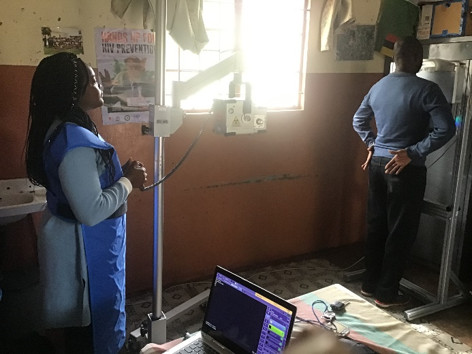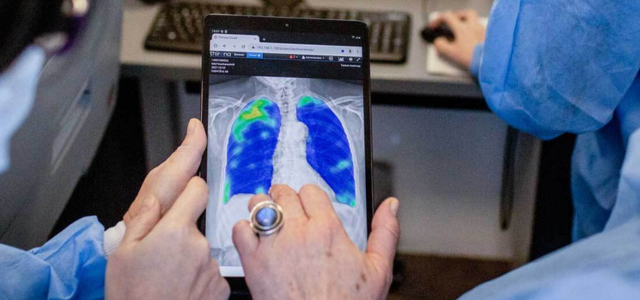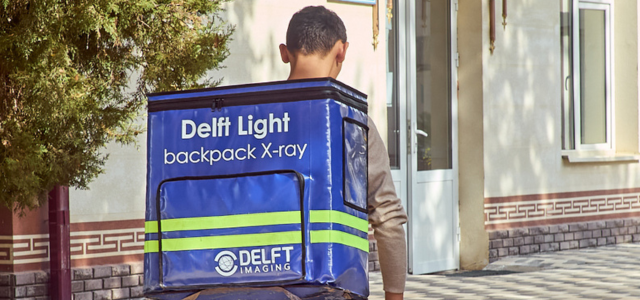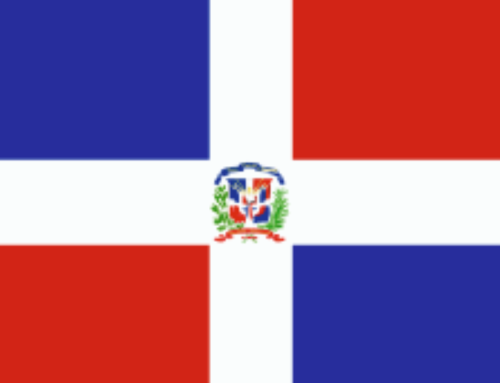In 2020, the total population of Zambia totalled approximately 18.4 million people. That year, there were an estimated 59,000 people who developed TB. Among them, 5,500 were children. Moreover, there were 19,000 missing people with TB, of which 2,776 were children.
In 2009, Delft Imaging installed the first semi-mobile X-ray system at Kanyama Clinic, Lusaka, Zambia. Kanyama is one of the busiest HIV/TB clinics in Zambia and provides health services for around 200,000 people. The clinic offers the X-ray facilities free of charge to mainly poor people.
In 2010, we delivered the first ‘OneStopTB’ mobile clinic for a TB Reach project executed by the Center of Infectious Disease and Research in Zambia (CIDRZ). In this WHO/TB Reach project, the unit is used to screen prison inmates on TB in 4 different prisons in Zambia. The container comprises a digital X-ray unit and a TB smear microscopy laboratory. The laboratory has a ventilated smear cabinet, LED fluorescent microscope, refrigerator and workbenches. The small lab has proven its capability and effectiveness with an average capacity of over 50 daily smear examinations. The X-ray and CAD4TB software was used to screen for TB suspects for molecular testing and DST, making it a fast and cost-effective TB intervention.
In 2011, the first version of the CAD4TB software was installed and used in a TB Reach-funded project of Zambart. The software is a stand-alone tool to determine who is eligible for a more time-consuming and expensive confirmatory test. The first results of this project were auspicious, showing a high correlation between a high (abnormal) score of the CAD4TB and a positive Xpert test. By using the X-ray as a first screening tool, more TB patients are found at a fraction of the cost.
In 2017, we leased one of its OneStopTB mobile TB screening clinics to CIDRZ in Zambia. The clinic was fitted with the multi-functional, digital EasyDR X-ray system and supported by the CAD4TB software.
In 2018, we supplied a containerised clinic, again fitted with the EasyDR X-ray system and the CAD4TB solution to FHI360, as part of the Challenge TB project.
In 2018, another lease project was implemented using a OneStopTB mobile TB screening clinic (with the EasyDR digital X-ray system and the CAD4TB software) for Zambart as part of an EDCTP grant. Four OneStopTB clinics were delivered, fitted with EasyDR X-ray systems and the CAD4TB artificial intelligence software. Two of the four were used in Zambia, and two in South Africa.
Later that same year, a OneStopTB mobile clinic was procured by PATH as part of the Eradicate TB Project (funded by USAID). The project included the EasyDR digital X-ray system, the CAD4B artificial intelligence software, and the necessary training and installation services.
In 2019, additional CAD4TB solutions were provided to CIDRZ to support their TB screening efforts across Zambia.
In 2020 and 2021, CAD4TB was installed across different mobile TB screening clinics nationwide.
In Early 2021, 3 Delft Light portable backpack X-ray systems were also provided to CIDRZ to complement their TB screening efforts in-country, which up to then had broadly leveraged the utilisation of mobile TB screening clinics.
In 2023, Delft Imaging provided 4 BabyChecker solutions to an in-country partner in Zambia, aimed to support the rapid detection of risky pregnancies using low-cost ultrasound and artificial intelligence-based insights.
For more information on how the OneStopTB mobile clinics are used in both Zambia and South Africa, please view the story ‘Practical Considerations for Conducting a TB Prevalence Survey Using the OneStopTB Platform in South Africa and Zambia’, as presented by Dr Chali Wapamesa and Michael Burnett during the Delft Q3 webinar of 2021.

Making a difference
In 2013, a study was published on detecting tuberculosis using automated reading (utilising the CAD4TB artificial intelligence solution). The study should show that the assessment of chest X-rays using CAD4TB and by clinical officers was comparable and that CAD4TB had the potential as a point-of-care test and for the automated identification of subjects who require further examinations. Note that this study used a significantly older version of CAD4TB than currently available.
In 2014, another study was published looking at the utilisation of CAD4TB in Lusaka, Zambia. It showed that the use of CAD with digital chest X-ray has the potential to increase the use and availability of chest radiography in screening for TB where trained human resources are scarce.
In 2017, a study looked at using digital chest X-rays with computer-aided diagnosis software (CAD4TB) versus symptom screening to define tuberculosis among household contacts and the impact on tuberculosis diagnosis. The study showed that symptom screening if used alone with follow-on definitive TB testing, would have led to missing eight of the 19th confirmed TB cases, and CAD software could support TB screening efforts.
CAD4TB was reviewed as part of the Zambia National Tuberculosis Prevalence Survey that same year. A study on this objective looked at the performance of the CAD4TB software against that of field- and central readers. The performance of CAD4TB was similar to that of field and central readers. The study concluded that the performance of automatic chest X-ray readings is comparable to that of human experts in a TB prevalence survey setting using culture as a reference.
Later, in 2021, one study was published on the costs and cost-effectiveness of a comprehensive tuberculosis case-finding strategy in Zambia, also considering CAD4TB.
That same year, a study looked at using CAD as a triage test for pulmonary tuberculosis and found that CAD-based chest X-ray analysis can be implemented as a high-sensitivity tuberculosis rule-out test.
In 2022, a study reviewed the performance of computer-aided detection digital chest X-ray reading technologies (CAD4TB) for the triage of active tuberculosis among persons with a history of previous tuberculosis. It showed that CAD4TB achieved a sensitivity and specificity of 89.3% and 24%, and 90.5% and 60.3% amongst those with and without previous TB, respectively.
In 2023, a study assessed non-tuberculosis abnormalities on digital chest X-rays with high CAD4TB scores using data from a tuberculosis prevalence survey in Zambia and South Africa. The study found that a wide range of non-TB abnormalities can be identified on digital chest X-rays among individuals with high CAD4TB scores but do not have bacteriologically confirmed TB. A tool like CAD4TB could simultaneously identify other causes of abnormal chest X-rays alongside TB, which could be interesting for future research.
Case Study
You can view the full case studies here:
Prevalence Survey using OneStopTB Clinic: In a TB prevalence survey in areas with high HIV rates, the use of a mobile clinic equipped with advanced diagnostic tools like digital X-rays and CAD4TB enabled quick and detailed TB screening, identifying TB and non-TB abnormalities efficiently. Discover how this mobile solution provides rapid results, enhancing TB detection and management in communities.
Intensified TB Case finding with OneStopTB Clinic: The Eradicate TB Project in Zambia’s high-burden province significantly boosted TB case notifications by 49% using the MOST clinic at key hotspots. Learn about the impactful role of mobile clinics in enhancing TB detection and how expanding this innovation could bridge the gap in TB incidence and notification.












